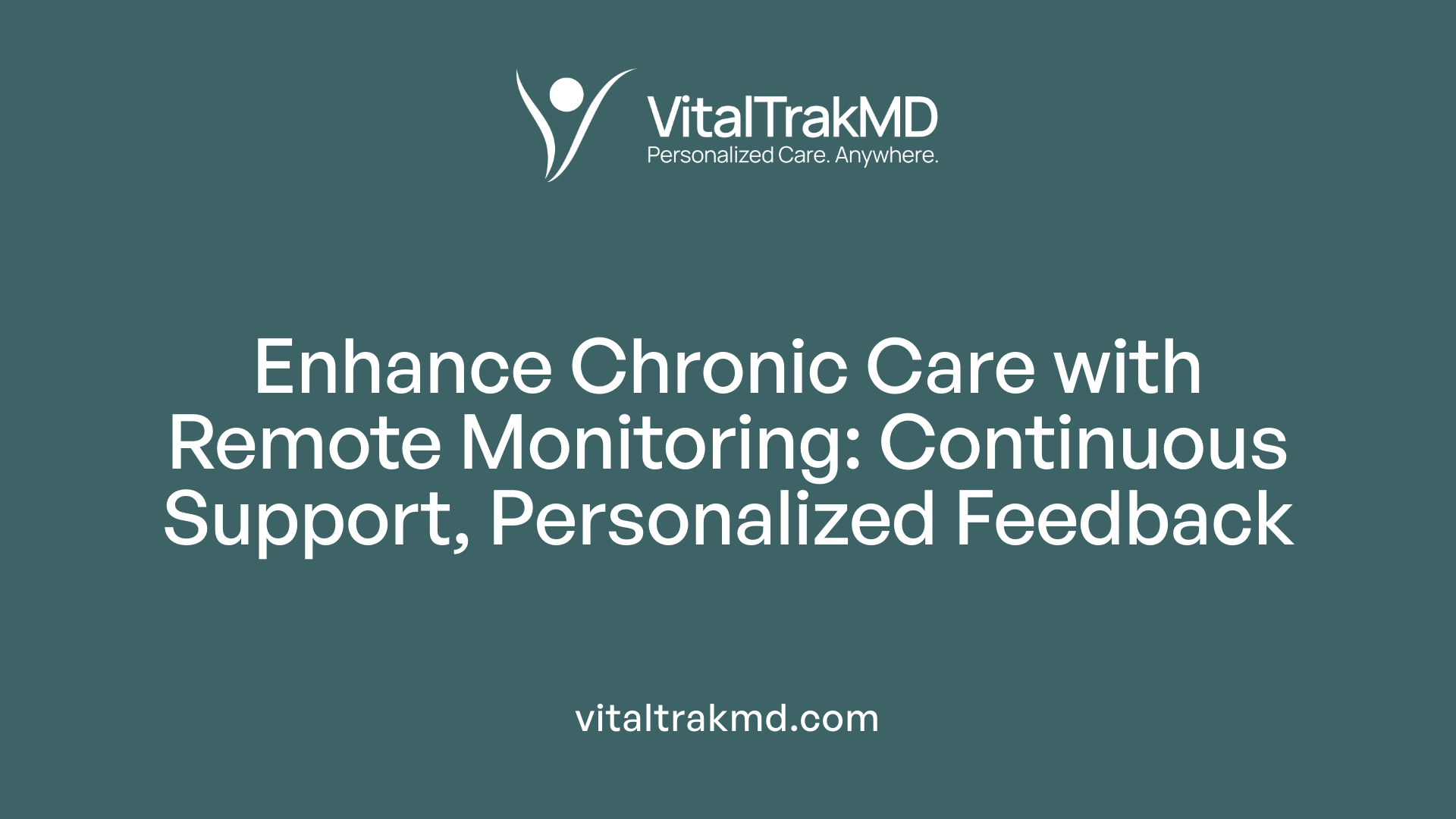How Hybrid Healthcare Eases the Transition Into New Health Routines

The Promise of Hybrid Healthcare
As healthcare evolves to meet the diverse needs of modern patients, hybrid healthcare models that combine virtual and in-person elements are emerging as a powerful approach to support new health routines. Especially relevant in the post-COVID era, this blend offers flexibility, accessibility, and personalized care, helping individuals successfully adopt and maintain healthier lifestyles. This article explores how hybrid healthcare eases the transition into sustainable health behaviors through innovative weight management, chronic disease care, and wellness programs delivered via multidisciplinary teams and supported by advanced technology.
Understanding Hybrid Healthcare in Lifestyle Interventions

What is a hybrid healthcare model in lifestyle interventions?
A hybrid healthcare model blends in-person and virtual care elements to deliver intensive lifestyle intervention (ILI) programs. It offers a combination of face-to-face interactions with remote support, designed especially for patients managing chronic conditions like diabetes and obesity.
How is the hybrid intensive lifestyle intervention structured?
Typically, a hybrid ILI program includes a limited number of in-person sessions—often two—combined with multiple virtual sessions, commonly around ten. This structure ensures direct accountability and accurate health measurements while leveraging technology to extend program access and convenience.
How does the hybrid model compare with virtual-only and in-person models?
Studies demonstrate that hybrid models yield similar outcomes to purely virtual (VM) and solely in-person models (iPM) in terms of weight loss and A1C reduction. For example, a hybrid program achieved about an 8% average weight loss and a significant decrease in A1C at 12 weeks, comparable to the other modalities.
What are the benefits of flexibility and accountability in the hybrid model?
Hybrid care provides increased flexibility by allowing patients to participate remotely, which reduces barriers like travel and scheduling conflicts. Simultaneously, it maintains in-person accountability crucial for accurate health assessments and fostering engagement. This dual approach caters well to patient preferences in the post-COVID era by integrating telehealth advantages with traditional care.
How can care programs be designed to support individuals managing chronic conditions?
Hybrid healthcare programs support chronic management by combining personal goal-oriented strategies with multidisciplinary team involvement, including physicians, psychologists, dietitians, and exercise specialists. The use of real-time patient monitoring tools, such as remote patient monitoring systems, enhances personalization and timely intervention, promoting adherence, improved metabolic control, and overall better health outcomes.
Effectiveness of Hybrid Models for Weight and Diabetes Management

What are the weight loss and A1C reduction outcomes with hybrid models?
The hybrid model (HM) for intensive lifestyle intervention demonstrated significant improvements in both weight and glycemic control. Participants typically lost about 8% of their baseline weight within 12 weeks. Additionally, they experienced a reduction in A1C of approximately 0.6%, signifying better blood sugar regulation.
How does the hybrid model compare with virtual and in-person models?
When compared to virtual (VM) and in-person (iPM) program formats, the hybrid approach showed comparable effectiveness. Although it combines two in-person sessions with ten virtual ones, this blended format maintains the benefits of face-to-face accountability and accurate health measurements while offering greater flexibility.
What were the results observed at 12 weeks?
At the 12-week mark, the HM participants showed weight loss and A1C improvements similar to those in VM and iPM groups. All three groups exhibited better glycemic control, cardiovascular risk factor improvements, and decreased medication use, indicating comprehensive health benefits across program types.
What strategies are scientifically proven to aid in sustainable weight loss?
Hybrid models facilitate sustainable weight loss by combining frequent virtual sessions with periodic in-person interactions, promoting accountability and behavioral support. This balance allows consistent energy deficits through personalized dietary and physical activity guidance, enhanced by continuous monitoring and coaching.
| Model Type | Weight Loss Outcome | A1C Reduction | Additional Benefits |
|---|---|---|---|
| Hybrid Model | ~8% weight loss | -0.6% | Combines flexibility with in-person accuracy |
| Virtual Model | Comparable weight loss | Comparable | Increased accessibility and convenience |
| In-Person Model | Comparable weight loss | Comparable | Direct engagement and thorough assessments |
Harnessing Remote Patient Monitoring for Continuous Support

How can care programs be designed to support individuals in managing chronic health conditions?
Remote Patient Monitoring (RPM) integrates modern technologies to continuously track important health metrics such as weight and physical activity. This approach typically uses cellular-enabled scales and wearable devices, which transmit data in near real-time to healthcare providers. The continuous flow of information allows care teams to monitor patient progress closely and provide timely, personalized feedback.
By maintaining a constant connection between patients and providers, RPM fosters enhanced motivation and adherence to lifestyle and treatment plans. Patients receive ongoing encouragement and tailored guidance that reinforce healthy behaviors, which are essential for managing chronic conditions like obesity and diabetes.
The real-time data transmission enables clinicians to identify early warning signs or plateaus in progress, facilitating quick interventions and adjustments to treatment. This dynamic support system encourages sustained engagement and long-term weight management success.
Incorporating RPM into chronic care programs maximizes flexibility and accessibility while maintaining proactive, patient-centered management. As a result, RPM offers an effective strategy for overcoming barriers to continuous care, improving outcomes, and supporting healthier lives.
Integrating Chronic Care Management with Weight Management

How can care programs be designed to support individuals in managing chronic health conditions?
Chronic Care Management (CCM) offers a comprehensive approach by integrating weight management with the treatment of chronic diseases. CCM revolves around coordinated and personalized care plans that are tailored to the individual's health needs.
Personalized care plans under CCM include regular check-ins, medication adjustments, and close coordination among healthcare providers. This personalization promotes better adherence and empowers patients through education on managing both obesity and their chronic conditions.
Improved medication management is a critical aspect of CCM. By routinely reviewing and optimizing medications, CCM ensures that patients receive treatments that effectively address their weight and associated comorbidities such as diabetes and hypertension.
Patient education within CCM emphasizes self-management skills, helping individuals to understand their condition, make informed decisions, and maintain healthy behaviors long-term.
Research shows that CCM can lead to significant benefits, including an average weight loss of about 10% over six months, enhanced control of obesity-related diseases, and improved overall health outcomes. This holistic and sustained approach underscores the importance of integrating chronic disease and weight management for effective patient care.
Principal Care Management: Targeted Personalized Approaches to Obesity
What strategies are scientifically proven to aid in sustainable weight loss?
Principal Care Management (PCM) focuses on creating individualized dietary and exercise plans tailored to each patient's unique health profile. This personalized approach begins with thorough assessments that help healthcare providers design interventions specifically suited to the patient's needs.
Research shows that PCM leads to substantial BMI reduction — studies cite a 30% greater decrease compared to standard care. Patients engaged in PCM experience not only immediate weight loss but also improved management of obesity-related conditions such as diabetes and hypertension.
The success of PCM depends heavily on long-term engagement. Sustained participation helps patients maintain lifestyle modifications and reach consistent weight management. Continued support through regular follow-ups and customized adjustments reinforces healthy behaviors, leading to reduced health risks over time.
By integrating specialized care plans, PCM effectively supports sustainable weight loss and better chronic disease control, addressing both medical and behavioral aspects of obesity.
Virtual Health Coaching After Bariatric Surgery
Post-sleeve gastrectomy weight loss
Studies show that patients participating in virtual health coaching programs after sleeve gastrectomy experienced significant weight loss, dropping from an average of 250.3 pounds to 226.7 pounds. This notable decline highlights the potential of virtual support in enhancing post-surgical outcomes.
BMI reductions post-surgery
Alongside weight loss, participants demonstrated substantial reductions in body mass index (BMI) at multiple time points following surgery. The average BMI decrease was 7.4 kg/m², underscoring the effectiveness of continuous lifestyle adjustments supported by virtual coaching.
Advantages of virtual coaching
Virtual health coaching offers several important benefits, including increased accessibility for patients regardless of location, decreased patient burden by eliminating travel needs, and cost-effectiveness for both patients and healthcare providers. These factors make virtual programs an attractive option in modern post-operative care.
Importance of ongoing support
Ongoing, personalized virtual coaching provides continuous guidance that helps patients maintain their weight loss after surgery. This consistent support encourages adherence to healthy habits and lifestyle modifications, crucial for long-term health and well-being.
What strategies are scientifically proven to aid in sustainable weight loss?
Continuous, personalized virtual health coaching post-bariatric surgery enhances lifestyle modifications, leading to significant and sustained weight loss. The virtual format increases accessibility and reduces patient burden while providing essential behavioral support, making it an effective strategy for maintaining post-surgery weight loss.
Digital Wellness Programs for Individuals with Disabilities
What is the MENTOR 2.0 program design and its goals?
The MENTOR 2.0 program is an 8-week online health promotion initiative specifically designed for people with physical disabilities. It focuses on mindfulness, exercise, and nutrition through weekly guided classes led by trained instructors. Additionally, it includes virtual health coaching sessions to discuss various wellness domains, ensuring a holistic approach to health and well-being.
How does MENTOR 2.0 improve physical and mental health?
Participants in the MENTOR 2.0 program show significant improvements across multiple wellness areas. Using quantitative measures such as the Godin Leisure-Time Exercise Questionnaire and the Connor-Davidson Resilience Scale, results reveal enhanced physical health with better exercise habits and nutrition. Mental and emotional/spiritual health also improve, notably in increased community contribution and engagement in outdoor activities, reflecting well-rounded benefits.
How does telehealth help overcome barriers for individuals with disabilities?
By delivering wellness programs digitally, MENTOR 2.0 overcomes traditional challenges faced by individuals with disabilities in accessing community-based programs. Telehealth allows flexible participation from home, reduces transportation and mobility burdens, and provides consistent support through virtual coaching. This approach not only broadens accessibility but also promotes sustained health behavior improvements.
What are the most effective wellness programs for overall health improvement?
Digital wellness programs tailored to unique populations, such as individuals with disabilities, effectively improve physical, mental, and emotional health through mindfulness, exercise, nutrition education, and virtual coaching. These accessible telehealth approaches demonstrate strong potential in enhancing overall wellness.
Comprehensive Components of Effective Wellness Programs
What Are the Most Effective Wellness Programs for Overall Health Improvement?
Effective wellness programs prioritize a holistic approach that integrates multiple health domains to optimize overall well-being. Central to these programs are balanced nutrition and regular physical activity, which support weight management, cardiovascular health, and metabolic function. Structured guidance on healthy eating and exercise routines helps individuals establish sustainable lifestyle habits.
Stress management and mental health support are equally critical elements. Programs often include mindfulness practices, psychological counseling, and smoking cessation resources to address behavioral and emotional factors influencing health. These components reduce anxiety, depression, and harmful habits, fostering better adherence to wellness goals.
The incorporation of digital tools has revolutionized wellness program delivery. Platforms offering virtual coaching, remote patient monitoring, and telehealth services increase accessibility and flexibility for participants. Features such as personalized feedback, continuous tracking, and secure data handling promote engagement while protecting privacy. This digital integration enhances real-time intervention and sustained motivation.
By combining these components—nutrition, physical activity, stress reduction, mental health, and technology-enabled personalization—wellness programs provide coordinated and measurable support. Such comprehensive designs are shown to improve health outcomes effectively across diverse populations and settings.
Medically Managed Weight Loss as Chronic Disease Care
How can care programs be designed to support individuals in managing chronic health conditions?
Medically supervised weight management treats obesity as a chronic disease that demands comprehensive, ongoing care. Programs typically begin with thorough medical evaluations including health history, lab tests, and psychological screening to develop personalized treatment plans tailored to each individual's needs.
Medical supervision and personalized plans
Individuals with a BMI of 30 or greater, or 27-30 with related health conditions, qualify for these programs. Care plans include personalized nutrition guidance, appointed physical activity regimens, and behavioral and mental health support, all integrated under continual medical oversight. This approach ensures safe weight loss, addresses coexisting conditions like diabetes or hypertension, and manages relapse prevention.
FDA-approved medications
Prescription medications are a cornerstone in many programs, especially GLP-1 receptor agonists such as semaglutide and tirzepatide. These drugs have demonstrated average weight losses of 15-25%, alongside improvements in metabolic profiles and cardiovascular risk factors. Medication benefits extend beyond weight loss to improved sleep apnea, fertility, and mental health.
Behavioral therapy and health monitoring
Behavioral therapy complements medication and lifestyle changes by fostering sustainable habit formation. Continuous health monitoring incorporates advanced measurements like 3D body scanning, metabolic rate testing, blood pressure, and blood sugar tracking. This close monitoring informs timely adjustments to treatment, ensuring patient safety and optimizing outcomes.
Overall, medically supervised weight loss integrates multidisciplinary care elements to treat obesity as a lifelong condition, helping individuals achieve and maintain meaningful weight loss while improving overall health.
Role of Antiobesity Medications in Hybrid Care Models
What strategies are scientifically proven to aid in sustainable weight loss?
Medically supervised weight management programs increasingly incorporate antiobesity medications (AOMs), particularly glucagon-like peptide-1 (GLP-1) receptor agonists, to enhance weight loss outcomes. These medications, such as semaglutide and tirzepatide, have demonstrated average weight loss achievements ranging between 15% and 25%, substantially surpassing results from lifestyle interventions alone.
GLP-1 receptor agonists work by regulating appetite and glucose metabolism, offering metabolic benefits beyond simple caloric reduction. Their advantages extend to improved cardiovascular risk factors, better glycemic control in diabetes, alleviation of sleep apnea symptoms, enhanced fertility, and positive effects on mental health.
The use of AOMs is integrated into hybrid care models—such as the hybrid intensive lifestyle intervention (ILI) combining in-person and virtual sessions—where personalized nutrition, exercise, and behavioral therapies complement medication use. This comprehensive approach promotes sustainable behavior changes by coupling pharmacotherapy with continuous health monitoring and multidisciplinary support.
While these medications present gastrointestinal side effects, gallstones, and potential mood changes, medical supervision ensures patient safety and optimal management. Continuous follow-up, medication adjustments, and relapse prevention strategies form part of the long-term care framework needed for maintaining weight loss.
Ultimately, the combination of antiobesity medications with tailored lifestyle interventions within hybrid models offers a scientifically validated path to sustained weight reduction and improved metabolic health outcomes.
Community-Based Weight Management Programs: Accessibility and Impact
How can care programs be designed to support individuals in managing chronic health conditions?
Community-based weight management programs (WMPs) provide a practical and accessible framework for individuals managing obesity and associated chronic conditions. These programs often operate within primary care settings, where physicians have received specialized training in obesity medicine. This integration increases the accessibility of care, allowing patients to receive support within familiar healthcare environments rather than specialized centers.
A notable feature of many community programs is the use of antiobesity medications (AOMs). For example, in one study, 78% of participants used medications alongside lifestyle counseling, significantly enhancing weight loss outcomes. Such medication-assisted management supports patients in achieving and maintaining weight loss beyond what lifestyle changes alone often deliver.
Moderate weight loss achieved through these community programs — often defined as greater than 5% total body weight reduction — plays a crucial role in improving obesity-related comorbidities. Patients engaged in at least four program visits lost an average of 5.7% of their body weight, showcasing the importance of ongoing engagement. This level of weight loss has been associated with improvements in conditions such as diabetes, hypertension, and cardiovascular risks, underlining the broader health benefits.
By combining individualized lifestyle counseling, pharmacotherapy, and sustained clinical engagement within accessible primary care settings, community-based WMPs support effective long-term management of obesity as a chronic disease. Such models reflect an evolving approach to delivering chronic disease care, emphasizing convenience, comprehensive treatment, and meaningful health improvements.
The Importance of Ongoing Monitoring and Feedback in Hybrid Healthcare

Tracking Body Composition and Vital Signs
A vital aspect of hybrid healthcare models is the consistent monitoring of body composition and key vital signs such as blood pressure, blood sugar, and liver function. These metrics provide actionable insights into a patient's health status and progress, enabling clinicians to make informed decisions and tailor treatment plans effectively.
Advanced Measurement Tools
To enhance precision in assessing health changes, advanced tools like 3D body scanning and metabolic rate measurements are employed. These technologies capture detailed data that help to identify subtle shifts in body composition or metabolic function that might be missed with traditional methods.
Continuous Clinical Adjustments
Continuous data streaming from remote patient monitoring systems empowers healthcare teams to adjust medications, modify lifestyle recommendations, and address emerging concerns in near real-time. This adaptability is critical in managing chronic conditions such as obesity and diabetes, where individual responses to therapy can vary significantly.
Such ongoing monitoring structures form the backbone of personalized care, ensuring interventions remain aligned with patients’ evolving needs. By integrating frequent assessments and feedback within hybrid programs, clinicians improve patient adherence and ultimately support more sustainable health outcomes.
Supporting Chronic Health Management
Care programs designed with these tools facilitate dynamic care that keeps pace with chronic disease progression. This helps patients maintain motivation and engagement in their health, as their treatment reflects current data rather than scheduled periodic visits. Personalized feedback loops are therefore essential in achieving long-term success in managing chronic illnesses.
Advantages of the Hybrid Approach in the Post-Pandemic Era
How can care programs be designed to support individuals in managing chronic health conditions?
Modern care programs increasingly adopt a hybrid model combining in-person sessions with virtual components. This approach aligns with patients' growing preference for flexibility, particularly in the post-pandemic era where digital health options have become vital. By mixing two face-to-face visits with multiple online interactions, hybrid programs maintain the essential accountability and hands-on assessments possible only in person.
Such a blend ensures patients receive continuous support that fits their schedules and lifestyles without overwhelming them. The virtual sessions offer convenience and broader accessibility, reducing barriers related to travel and time, while in-person meetings enhance trust, precise measurements, and personalized guidance.
This integrated method leverages digital health tools, including remote patient monitoring (RPM) systems and telehealth coaching, empowering individuals to track their weight, physical activity, and glycemic control in real time. Continuous feedback enhances motivation and adherence, important for managing chronic conditions such as diabetes and obesity.
By tailoring care to patient needs—offering personalized plans and ongoing evaluation—hybrid healthcare models improve engagement and outcomes. They empower patients to take a proactive role, fostering sustained lifestyle changes and better long-term health management in a convenient yet accountable framework.
Behavioral and Psychological Support within Hybrid Programs
What strategies are scientifically proven to aid in sustainable weight loss?
Incorporating mental health integration into hybrid lifestyle intervention programs is essential for addressing the complex emotional and cognitive challenges that patients with obesity and diabetes face. Comprehensive programs often involve psychologists who provide behavioral therapy alongside medical and nutritional care.
Motivational interviewing is a scientifically recognized technique used to enhance a patient's readiness to adopt healthier behaviors. This patient-centered counseling style helps to resolve ambivalence and strengthen motivation toward sustained lifestyle changes, making it a valuable component of hybrid models that combine virtual and in-person sessions.
Enhancing long-term adherence is supported by continuous behavioral support and personalized coaching, which hybrid programs enable effectively by blending face-to-face accountability with the accessibility of telehealth. Regular check-ins via virtual platforms reinforce commitment and enable timely interventions when patients face challenges.
Together, these integrated behavioral and psychological strategies improve patient engagement, support self-management skills, and foster sustainable weight loss. This holistic approach recognizes that successful weight management extends beyond physical components to encompass mental and emotional wellbeing.
| Strategies | Role in Weight Management | Implementation in Hybrid Programs |
|---|---|---|
| Mental health integration | Addresses emotional/cognitive barriers | Embedded psychologists provide behavioral therapy |
| Motivational interviewing | Enhances motivation and readiness for change | Delivered in-person and virtually by trained staff |
| Continuous behavioral support | Supports adherence and relapse prevention | Regular virtual coaching sessions reinforce healthy habits |
These strategies show that hybrid models not only match the effectiveness of fully virtual or in-person programs in weight and A1C reduction but also improve long-term outcomes by sustaining lifestyle changes through robust behavioral and psychological support.
Cost-Effectiveness and Insurance Coverage of Hybrid Programs
How Does Insurance Support Hybrid Healthcare Programs?
Many hybrid lifestyle and wellness programs increasingly benefit from insurance coverage that includes office visits, laboratory tests, and certain medications. This inclusion helps reduce out-of-pocket costs for patients, making these programs more accessible and sustainable. Insurance providers recognize the long-term value of preventing and managing chronic conditions like obesity and diabetes, encouraging coverage policies that support comprehensive care models.
What Financial Tools Can Improve Affordability?
Flexible Spending Accounts (FSAs) and Health Savings Accounts (HSAs) play a crucial role in making hybrid programs more affordable. These accounts allow patients to set aside pre-tax dollars specifically for medical expenses, including copays, medications, and wellness services. By using FSAs and HSAs, participants can manage costs effectively while engaging fully in their health programs.
What Strategies Enhance Cost-Effectiveness in These Models?
Hybrid approaches combine in-person and virtual visits, which reduce the frequency of travel and related expenses for patients. The use of telehealth sessions supports continuity and personalized care without the higher costs typically associated with traditional clinic visits. Additionally, leveraging remote monitoring technology ensures timely interventions that can prevent costly complications, further enhancing the economic benefit of these programs.
To maximize access, effective wellness and hybrid healthcare programs incorporate insurance coverage and leverage flexible spending accounts, reducing financial barriers and supporting sustained patient participation.
Measuring Success: Clinical and Patient-Reported Outcomes
What weight loss percentages are achieved in these programs?
Many lifestyle and medically managed weight loss programs report clinically meaningful weight reductions. For example, hybrid intensive lifestyle interventions yielded about an 8% weight loss at 12 weeks, comparable with virtual and in-person models. Community-based programs with primary care involvement showed 53% of participants losing over 5% of body weight, with averages around 5.7%. Medically managed approaches incorporating medications produced even greater results, with some patients achieving 10% or more after one year.
How do biometric indicators improve alongside weight loss?
Across different program formats, significant improvements were observed in key biometric indicators such as A1C reduction (around 0.6% in hybrid models), blood pressure, and lipid profiles. These changes support better glycemic control and cardiovascular health. Use of continuous glucose monitoring confirmed similar glucose time in range improvements across hybrid and other intervention groups. Additionally, medication use often decreased as a result of better chronic disease management.
How are patient wellness assessments incorporated?
Programs like MENTOR 2.0 demonstrate the importance of evaluating wellness beyond physical measures. Participants showed significant gains in exercise, nutrition, mental health resilience, mindfulness, and social engagement. These patient-reported outcomes highlight improvements in mental, emotional, and spiritual domains, reflecting holistic well-being. Virtual health coaching also enhances ongoing support, boosting motivation and adherence.
What are the most effective wellness programs for overall health improvement?
Successful health programs demonstrate improvements not only in clinical measures like weight loss and blood pressure but also in patient-reported outcomes assessing mental, physical, and emotional well-being, reflecting holistic health gains. Integrating biometric data with wellness assessments provides a comprehensive picture of success.
| Program Type | Weight Loss (%) | Biometric Improvements | Wellness Outcomes |
|---|---|---|---|
| Hybrid Lifestyle Intervention | ~8% at 12 weeks | A1C -0.6%, blood pressure, lipids | Noted improvements; CGM validated |
| Community-Based WMP | 5-6% average | Reduced medication use, improved BP | Lifestyle counseling included |
| Medically Managed Weight Loss | 3-12% at 1 year | Metabolic health, cardiovascular risk | Behavioral therapy integrated |
| MENTOR 2.0 | Not weight focused | N/A | Enhanced physical, mental health |
These integrated measurements are crucial when evaluating the success of hybrid health programs that combine flexibility with clinical effectiveness.
Technology as an Enabler of Personalized Hybrid Healthcare
How can care programs be designed to support individuals in managing chronic health conditions?
Modern care programs leverage technology to provide personalized support for individuals managing chronic health issues. Wearable devices such as cellular-enabled scales and fitness trackers gather real-time data on weight, physical activity, and other vital parameters. This continuous stream of information allows healthcare providers to monitor patient progress accurately and intervene promptly when needed.
Telemedicine platforms facilitate flexible delivery of care by blending virtual consultations with in-person sessions, as seen in hybrid models for diabetes and obesity management. This approach increases accessibility while maintaining accountability and precise health measurements.
Advanced data analytics processes the collected information to customize treatment plans tailored to individual needs. For example, integrated systems analyze glucose levels, medication responses, and lifestyle metrics to refine interventions dynamically. This customization enhances patient engagement by making care more relevant and responsive.
Collectively, these technologies empower a proactive, personalized care environment, enabling patients to take an active role in their health journey. Remote patient monitoring and telehealth not only improve clinical outcomes but also support sustained lifestyle changes essential for managing chronic diseases effectively.
Sustaining Long-Term Health Habits Through Hybrid Care
How can care programs be designed to support individuals in managing chronic health conditions?
Chronic health condition management demands sustained commitment beyond initial interventions. Successful programs emphasize ongoing follow-up, relapse prevention, and improving functional status and quality of life.
Hybrid care models excel by combining virtual sessions with in-person visits, offering continuous, coordinated support. This blend allows healthcare providers to maintain accountability and deliver personalized interventions while giving patients flexibility and accessibility.
Relapse prevention is integrated through frequent check-ins and remote patient monitoring (RPM), which tracks weight, physical activity, and other metrics. Timely feedback and adjustments help reinforce healthy behaviors and quickly address any setbacks.
Ongoing follow-up includes medication management, lifestyle counseling, and psychological support, delivered by multidisciplinary teams featuring diabetologists, psychologists, dieticians, and exercise physiologists. This comprehensive approach addresses medical, behavioral, and emotional needs simultaneously.
Building functional status and quality of life is prioritized by tailoring plans to patients’ daily activities and goals, promoting sustainable habits rather than short-term fixes. Hybrid care’s flexibility supports engagement during diverse life circumstances, enhancing long-term adherence.
Overall, the hybrid care framework supports sustained health improvements by integrating technology and human interaction to promote accountability, motivation, and personalized care over time.
Embracing Hybrid Healthcare for Lasting Lifestyle Change
Hybrid healthcare models uniquely combine the strengths of digital and in-person care to ease patients’ transitions into new health routines. By offering personalized support, advanced monitoring, multidisciplinary collaboration, and flexible access, hybrid programs effectively promote sustainable weight loss, chronic disease management, and overall wellness. As healthcare continues evolving post-pandemic, adopting hybrid approaches will be key to addressing diverse patient needs, improving engagement, and achieving healthier lives through lasting behavior change.
References
- Hybrid model of intensive lifestyle intervention is potentially ...
- The Impact of Virtual Care Programs on Weight ...
- (PDF) Evaluating the Impact of a Virtual Health Coaching ...
- Mindfulness, Exercise, and Nutrition To Optimize ...
- Medically Managed Weight Loss: 7 Powerful Benefits in 2025
- Impact of a Community-Based Weight Management ...
- Optimal Diet Strategies for Weight Loss and ... - PubMed Central
Recent articles
Want to Feel Better and Live Healthier?
Join hundreds of patients taking control of their health with personalized care that fits their life – not the other way around.
Rated 4.8/5 by 32+ customers







